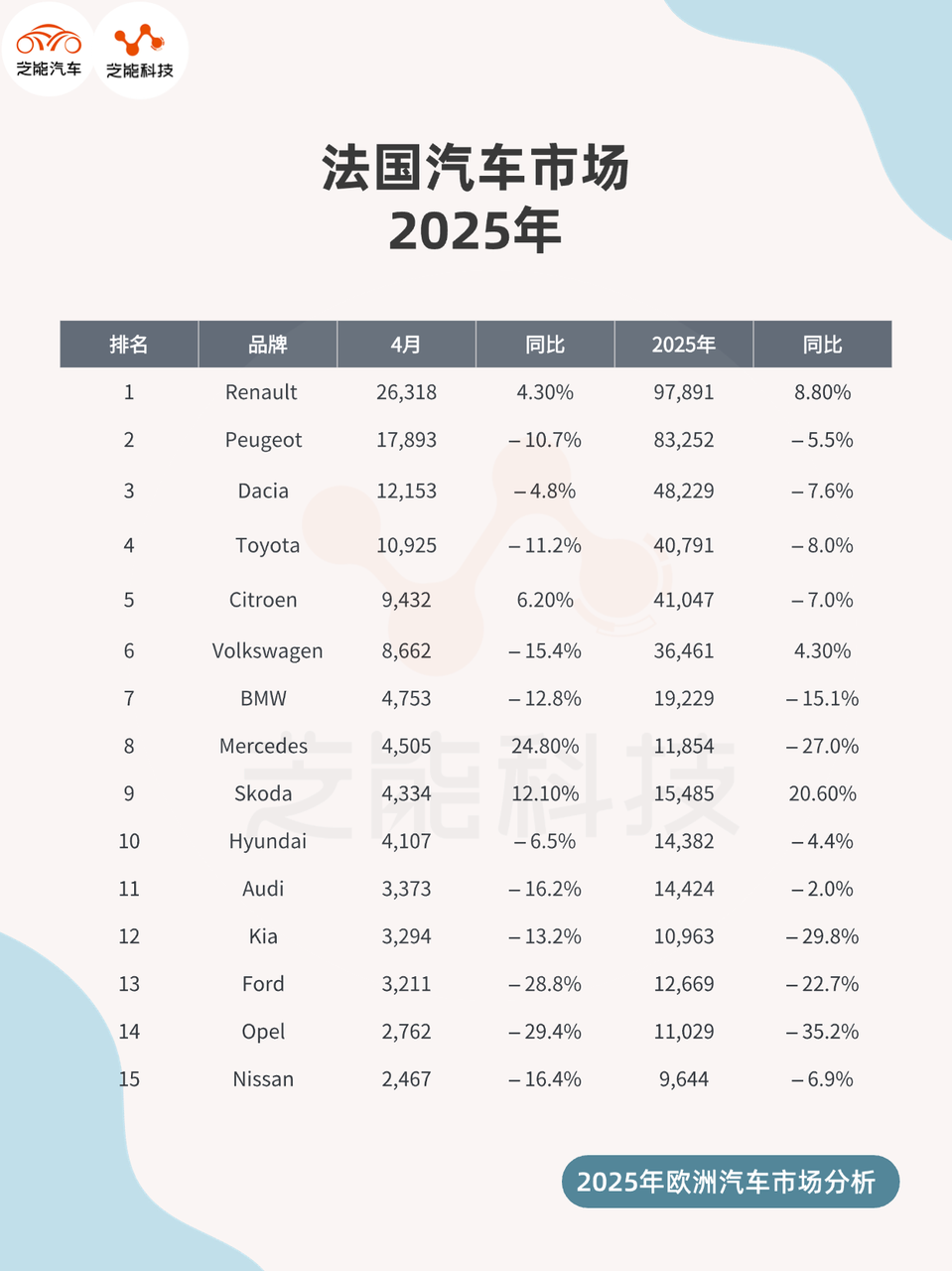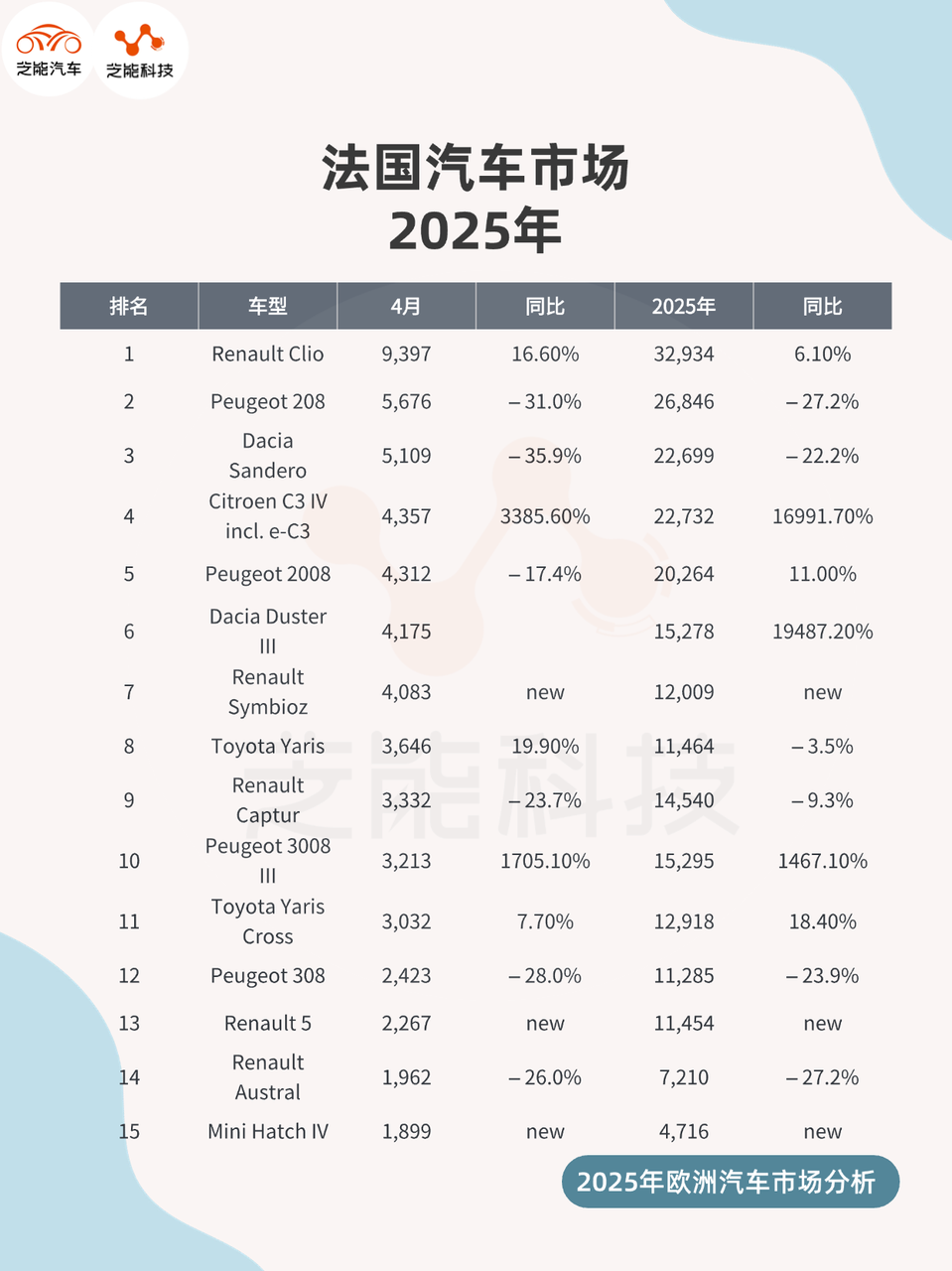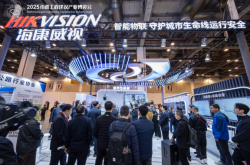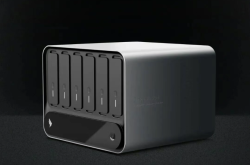European Auto Market | France April 2025: Chinese Brands Break Through Despite Market Downturn
![]() 05/29 2025
05/29 2025
![]() 644
644

In April 2025, the French new car market continued to experience sluggishness, registering a year-on-year decline of 5.6%. Amidst this downturn, gasoline and diesel models suffered significant losses, whereas hybrid vehicles emerged as a growth highlight.
Renault spearheaded growth with innovative models like the Symbioz, further solidifying its market-leading position. Meanwhile, Chinese brands continued their penetration into the French market, with MG making notable strides and BYD's Seal U successfully entering the top 50 models list, showcasing the competitiveness of Chinese vehicles in electrification and product capabilities.
This article delves into the French market landscape and potential changes, examining overall market trends and the performance of Chinese brands.
01
Review of the French Auto Market in April:
Gasoline Cars Decline Sharply, Renault Takes the Lead
In April 2025, passenger car registrations in France totaled 138,694, a 5.6% decrease from the previous year, extending a market contraction trend observed over several months.
Cumulative sales from the beginning of the year to April stood at 548,779, a 7.3% year-on-year decline.
Notably, the private car purchase market contracted significantly, with private leasing falling more than 20% year-on-year, indicating a lack of consumer confidence.
● In terms of powertrain structure, the French market is undergoing rapid transformation:
◎ Gasoline car sales: 28,932 units, down 38.7% year-on-year;
◎ Diesel car sales: 24,827 units, down 41.1%;
◎ LPG (Liquefied Petroleum Gas) sales: 4,869 units, down 25.7%;
◎ Plug-in hybrid vehicle sales: 9,593 units, down 11.7%;
◎ Battery electric vehicle (BEV) sales: 25,542 units, up 2.4%, with market share rising to 18.4%;
◎ Hybrid vehicle (HEV) sales: 63,060 units, up 37.7%, becoming a mainstream powertrain option.
● From a brand perspective:
Renault emerged as the clear winner, capturing a 19.0% market share, up 4.3% or nearly two percentage points year-on-year.
The Renault Clio returned to its peak, accounting for 6.8% of the market, marking its best performance since the pandemic. Additionally, the new model Symbioz continued its ascent, surpassing its sibling Captur for the first time to rank seventh on the model list.

● Among mainstream brands:
Traditional German and French brands such as Peugeot (-10.7%), Volkswagen (-15.4%), and BMW (-12.8%) generally experienced declines, particularly with sales of Peugeot 208 (-31.0%) and Dacia Sandero (-35.9%) plummeting, leading to a drop in their overall rankings.
Conversely, Citroen and Mercedes bucked the trend, with Mercedes recording a 24.8% increase and Skoda a 12.1% increase, suggesting that some premium brands are starting to boost sales through new energy models.

In April 2024, the top 10 selling models in France were: Renault Clio, Peugeot 208, Dacia Sandero, Citroen C3, Peugeot 2008, Dacia Duster, Renault (possibly other models such as Arkana, etc.), Toyota Yaris, Toyota Yaris Cross, and Peugeot 3008.
Two particularly noteworthy changes include Mini Hatch IV rising to 15th place due to a significant 120.2% increase in brand market share, and BYD Seal U entering the French market's top 50 for the first time, ranking 48th, marking a significant breakthrough for BYD.
02
Impressive Performance of Chinese Brands: MG and BYD Form an 'Electric Dual Arrow'
Amidst the local French auto market's downturn, Chinese brands have achieved growth against the trend. Among them, MG's performance stands out:
◎ April sales: 1,779 units, up 126.6% year-on-year;
◎ Cumulative sales in 2025: 8,094 units, up 44.7% year-on-year;
◎ In the brand rankings, MG rose from 18th last year to 19th, approaching niche brands like Suzuki and Mini.
MG's growth is not only reflected in sales but also in the gradual expansion of its electric product matrix in the French market.
On the product front, MG 4 and MG ZS EV remain the mainstay models, offering affordable prices and balanced configurations, making them viable options for French consumers for commuting and household use.
Although BYD's overall sales did not enter the top 20 brands, its Seal U model entered the top 50 sales in France in April, ranking 48th, representing the initial success of its high-end electric vehicle strategy.
In contrast to MG's 'cost-effective tactic', BYD is more inclined to enter the market with technological advantages. Notably, Seal U has received initial recognition for its battery integration, space design, and range performance. Based on the e-platform 3.0, it features a large-capacity blade battery and CTB body structure, offering balanced performance in range, safety, and handling.
From a technical standpoint, Chinese brands' leadership in electrification is evident not only in battery technology but also in the comprehensive advancement of electronic and electrical architectures, smart cabins, and assisted driving systems across vehicle models.
French consumers are gradually embracing this 'technology transfer', and Chinese brands are evolving from being seen as mere 'fuel replacements' to 'smart electric' alternatives.
Cupra and MG compete in the electric compact car market, while BYD goes head-to-head with premium electric SUVs like Volkswagen ID.4 and Tesla Model Y.
Summary
The electrification transformation of the French market is evident at the powertrain level – gasoline cars are phasing out, while hybrids and pure electrics coexist and thrive. Amidst these structural changes, the growth of Chinese brands is not accidental but the culmination of a decade-long electrification strategy.




